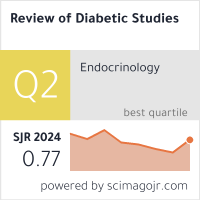The Role Of Ambulance Transport And Paramedics In Enhancing Emergency Care Outcomes For Patients Considering Advances In Modern Healthcare Technology
DOI:
https://doi.org/10.70082/2rbqnh08Abstract
The issue of technology saturation in healthcare facilities has introduced a sharp sense of digital disconnection between pre-hospital emergency and hospital services, thus creating a disjointed continuum that may compromise patient outcomes. It was therefore the aim of the current study to determine the beneficial effect of ambulance-based technology and paramedic practice on clinical outcomes in patients presenting with time-threatening conditions quantitatively. The study used a mixed-methods explanatory sequential design that entailed the use of a retrospective analysis of 421 patients with a diagnosis of ST-elevation myocardial infarction (STEMI), stroke, or major trauma, followed by semi-structured interviews of 18 paramedics and physicians to explain the occurrence of the event. The quantitative part showed that the better Technology Use Score was, the higher the predictability of lower door-to-intervention time (B -1/6 -89min/score point, p -1/0.001) and higher chance of the correct pre-hospital alert (adjusted odds ratio 1.92, 95 per cent confidence interval 1.52, 2.42). Besides, members of the High-Technology group had significantly reduced median hospitalization (5 days vs. 9 days, p <.001), and a reduced 30-day mortality (5.2 vs. 18.3, p <.001) than did the members of the Low-Technology group. There was a strong positive relationship between the use of technology and the use of paramedic protocols (r = 0.58, p < 0.001). These results provide strong grounds to believe that the modern ambulance as a technologically advanced mobile clinical platform is a crucial part of a continuum of care.
Downloads
Published
Issue
Section
License

This work is licensed under a Creative Commons Attribution-ShareAlike 4.0 International License.


